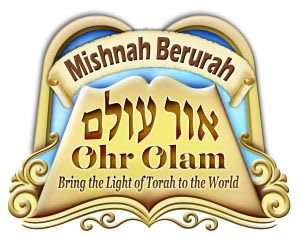Kiddush Bimkom Seudah on Shabbos Morning

Kiddush must always be immediately followed by a seudah (meal). Most Poskim maintain that this meal need not consist of bread in particular; baked mezonos items [including all types of Yerushalmi and noodle-kugels[i]] eaten after kiddush, as is common at a kiddush in shul, are considered a seudah for this purpose.[ii] After reciting kiddush, at least a kezayis (approx. 1 oz.) of a baked mezonos item should be eaten within three to four minutes.[iii]
When mezonos items are not available, such as on Pesach, a kiddush in shul is impractical as a method of fulfilling the requirement of kiddush bimkom seudah. In that case, one should preferably eat one’s bread seudah immediately after reciting kiddush at home. If that is not practical, one should drink a revi’is (3 fl. oz.) of wine or grape juice after kiddush in addition to that which was consumed for kiddush. If one has no other wine or grape juice, one can rely on the revi’is of wine consumed for kiddush.[iv]
Although some Poskim maintain that one may fulfill the seudah obligation by eating fruit[v] or shehakol items[vi] after kiddush is recited [if there are no mezonos items available],[vii] the basic halachah follows the Poskim who permit this only under special circumstances, such as a person who is weak and needs to eat and has no baked or cooked mezonos items available.[viii] One who relied on this opinion must repeat kiddush at home before the meal.
While there is no obligation to repeat kiddush at home if mezonos items were eaten after kiddush [unless there are other people at home who did not yet hear kiddush], it is praiseworthy to do so.[ix] This is certainly true for one who made kiddush on less than a revi’is of schnapps.[x]
[i] Shemiras Shabbos Kehilchasah 54:22; Az Nidberu VII, 31. See Meor Hashabbos, II, pp. 576-577.
[ii] Mishnah Berurah 273, note 25. [A notable exception is the view of the Vilna Gaon, who maintains that kiddush can be made only when a bread meal follows. His view is cited in Beiur Halachah 273:5 ד"ה כתבו without comment. Aruch Hashulchan 273:8 considers this to be the preferred method. See also R’ Akiva Eiger 273:5 citing Rabbeinu Yonah, and Pri Megadim 271:3. The widespread custom, however, follows the view of most Poskim; see Beiur Halachah 249:2ד"ה מותר .]
[iii] Some Poskim maintain that cooked mezonos items, such as a barley cholent, are also considered a seudah for this purpose (Magen Avraham, as explained by Igros Moshe, Orach Chaim II, 26).
[iv] Mishnah Berurah 273, notes 25 and 27, and Sha’ar Hatziyun 29; Aruch Hashulchan 273:9.
[v] Especially dates; Pri Megadim 273:11. See, however, Kaf Hachayim 273:42.
[vi] Preferably cooked; see Kitzur Shulchan Aruch 77:16.
[vii] Igros Moshe, Orach Chaim IV, 63. See also Ein Yitzchak, Orach Chaim 12 and Betzeil Hachochmah IV, 2; V, 115.
[viii] Mishnah Berurah 273, note 26.
[ix] Salmas Chayim I, 59; Betzeil Hachochmah IV, 147. See also Igros Moshe, Orach Chaim IV, 63:8).
[x] To satisfy the view of the majority of the Poskim mentioned earlier.
